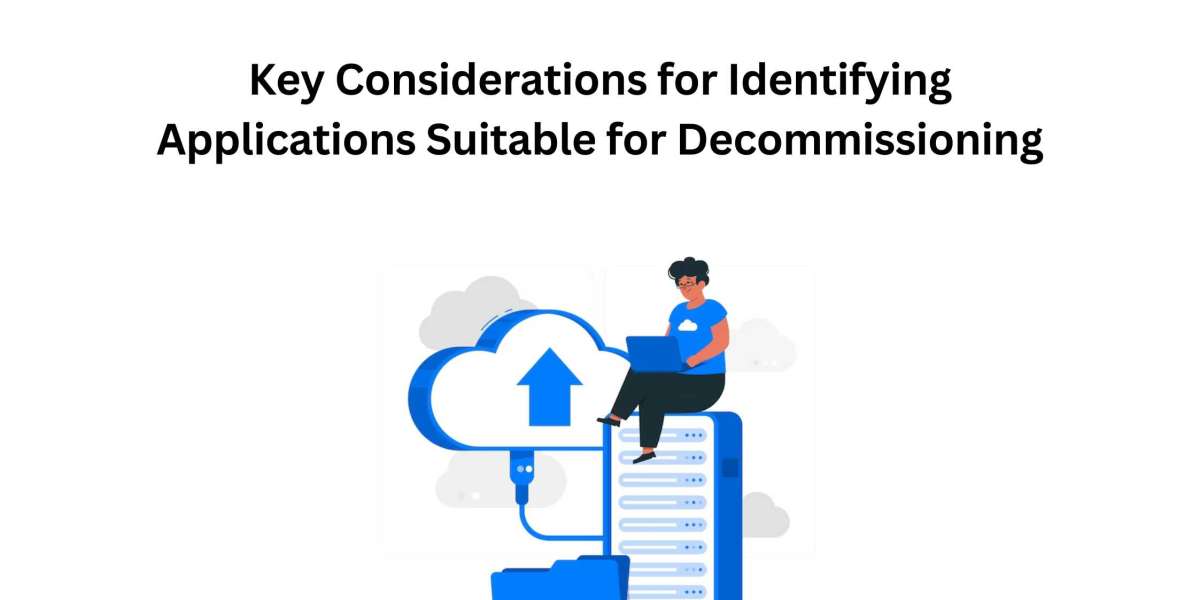Introduction: In today’s rapidly evolving technological landscape, organizations must regularly assess their application portfolios to identify outdated or redundant applications that are no longer serving their intended purpose. IT Application decommissioning offers a strategic approach to streamline IT operations, reduce costs, and improve overall efficiency. However, identifying which applications are suitable for decommissioning requires careful consideration. In this blog, we will explore key considerations for identifying applications suitable for decommissioning, helping organizations make informed decisions and maximize the benefits of the decommissioning process.
Business Value and Relevance: Assess the business value and relevance of each application within the organization. Evaluate whether the application aligns with current business objectives, processes, and strategic initiatives. Applications that no longer contribute to business goals or have become redundant due to technological advancements are strong candidates for decommissioning.
User Adoption and Engagement: Consider the level of user adoption and engagement with the application. If an application is underutilized or has a low user base, it may indicate that it no longer meets user needs or has been replaced by more efficient alternatives. Engage with users to gather feedback on their satisfaction, pain points, and suggestions for improvement to inform the decommissioning decision.
Technical Compatibility and Integration: Evaluate the technical compatibility and integration of the application with existing systems and infrastructure. Applications that are difficult to integrate, require excessive maintenance or customization, or pose compatibility challenges may hinder operational efficiency. Decommissioning such applications can streamline IT operations and reduce maintenance costs.
Data Management and Dependencies: Assess the data management aspects of the application. Consider the volume, quality, and sensitivity of the data associated with the application. Applications with outdated or redundant data that can be migrated or retired without impacting critical business processes are suitable candidates for decommissioning. Identify any dependencies on the application for other systems or processes to ensure a smooth transition.
Regulatory and Compliance Requirements: Consider the application’s compliance with industry regulations and data protection requirements. Applications that do not meet regulatory standards or pose risks to data privacy may need to be decommissioned to mitigate legal and compliance risks. Ensure proper data archiving and disposal processes are in place to meet regulatory obligations.
Total Cost of Ownership (TCO): Evaluate the total cost of ownership (TCO) of the application, considering licensing fees, maintenance costs, support contracts, infrastructure requirements, and associated resources. Applications with high TCO and low return on investment are good candidates for decommissioning, as retiring them can lead to significant cost savings and resource optimization.
Risk and Security: Assess the risk and security implications associated with the application. Applications that are vulnerable to security breaches, lack adequate support, or have a history of security incidents may pose significant risks to the organization. Decommissioning such applications mitigates security vulnerabilities and reduces potential risks.
Future Scalability and Innovation: Consider the application’s scalability and ability to support future growth and innovation. Applications that lack scalability or cannot adapt to evolving business needs hinder organizational agility. By decommissioning such applications, organizations can free up resources and invest in more innovative and scalable solutions.
Stakeholder Engagement and Communication: Involve key stakeholders, including business users, IT teams, and executive management, in the decision-making process. Gather insights, address concerns, and communicate the rationale behind the decommissioning decision. Stakeholder buy-in and collaboration are crucial for successful application decommissioning.
Conclusion: Identifying applications suitable for decommissioning requires a comprehensive evaluation of factors such as business value, user adoption, technical compatibility, data management, compliance, TCO, risk and security, future scalability, and stakeholder engagement. By carefully considering these key factors, organizations can make informed decisions, streamline their application portfolios, reduce costs, improve operational efficiency, and pave the way for innovation. Application decommissioning, when done strategically, enables organizations to optimize their IT landscapes and focus resources on systems that drive business growth and success.
#AvenDATA #ITdecommissioning #datadecomissioning #applicationdecommissioning #dataarchiving #applicationretirement








